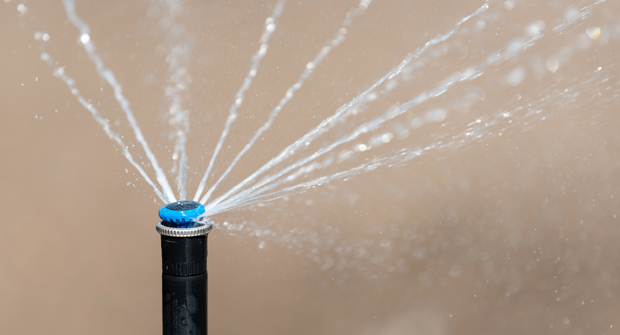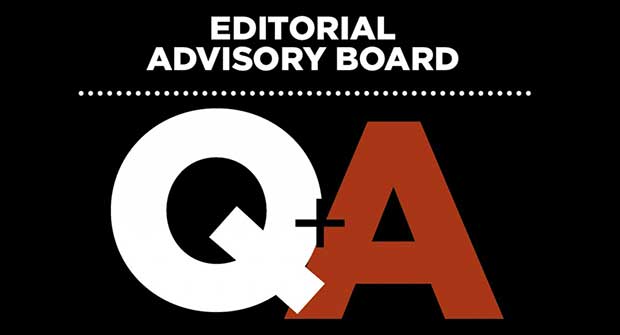Despite significant investment in turf reduction measures, the Scottsdale, Ariz., townhome community of Heritage Village IV continued to experience exorbitant water bills and rivers of misdirected water.
In March 2024, the community’s homeowners’ association (HOA) called in Phoenix-based irrigation contractor Ralph M. Holt, CLIA, CLWM, to investigate. Upon his initial audit of the nearly 50-year-old system, he suspected much deeper problems, such as undetected leaks, inefficient and outdated components, and excessive water distribution within non-landscaping areas.
“Every time they ran the irrigation system, they had enough water running down the street that you could float a small child,” says Holt, the president of Eco Verde Irrigation. “It was just amazing. I’d never seen that much water run down a street. It was crazy.”
Holt knew the irrigation system would require a comprehensive update and upgrade, including advanced smart controllers, check valves and pressure-regulating sprinkler heads. However, he anticipated that the cost of such an aggressive overhaul would be an obstacle for the HOA’s budget-conscious board members.
So, in his pitch, Holt approached HOA members from a few strategic considerations. First, he emphasized the intrinsic value of Heritage Village IV’s established landscaping. Homeowners in desert environs invest in communities for their lush green spaces. Continuing to eliminate these areas to conserve water could generate significant resident resentment, especially since these reductions have proven unsuccessful at saving water.
“Heritage’s HOA had already done turf conversions, but they didn’t see their water bill go down because the system was highly inefficient,” Holt says. “No amount of reductions was going to change that fact.”
“Most properties over water by about 40 percent or more,” he adds. “So, if you can make your system more efficient and use less water, there would be no need to change the landscaping.”
Holt then proposed the HOA considered system upgrades as a proactive measure to comply with inevitable future water restrictions. While the local water authority did not have a strict water-use mandate in place, that could change at a moment’s notice.
“There were different things they could do to make the irrigation system more efficient,” he says. “That could result in a 20- to 30-percent savings in water usage.”
Finally, Holt appealed to the HOA that system upgrades would result in fostering healthier landscapes with less water. Hydraulic issues within an irrigation system create pressure mismanagement and gross water inefficiencies. In some cases, Holt says water could potentially evaporate before reaching its intended landscape targets.
“In a large community, you don’t know what your hydraulics are doing,” he says. “When you have a flow sensor, you know when you have a broken pipe, a broken sprinkler head, or a valve stuck on or not open. The system takes action and turns that valve off or alerts you that the pipe is broken. Now you can fix it within a day or two and not three months later after all those gallons of water have been lost and your landscape has suffered.”
Heritage Village’s HOA initially elected to implement a smart controller with flow sensing. This decision was strategically driven by the city of Scottsdale’s flow-sensing rebate program. It offered a compelling financial incentive, positioning it as the most advantageous initial investment for the community’s water management overhaul.
In addition, they retrofitted two turf zones with high-efficiency rotary nozzles, incorporating pressure-regulating stems (PRS) and check valves to provide residents with a compelling visual demonstration of modern water conservation. The goal was to directly compare the dramatic reduction in runoff from the optimized zones versus the significant water waste observed from the remaining, less-efficient sections.
“We were able to clearly show the (high-efficiency) zone had some wet pavement, that’s it, compared to the boat races you could have in the other (zone),” he says.
Going forward, Holt is working with Heritage Village’s HOA on a comprehensive sprinkler head overhaul to reduce the number of heads in the system from 7,000 to 4,000. By demonstrating the tangible benefits of adopting pressure-regulating heads and strategically transitioning certain areas to rotary nozzles, Holt says the community can minimize water waste and realize long-term cost savings by reducing future maintenance issues and replacement expenses.
“Always educating the customer is important so they understand the ‘why’ about what you’re doing and understanding the results,” Holt says. “We’ve made some progress, and now these are the ways we can make even more progress.”


